#Guardian of Fukushima
Photo


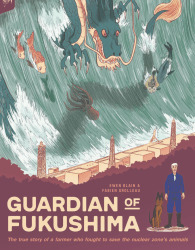





Fantasy, romance, and shonen feature prominently in our reviews this week, but so, too, do two rarer releases for manga-associated brands. They include Guardian of Fukushima, a Franco-Belgian work inspired by Japanese culture and the 2011 earthquake, and Tezcatlipoca, a Japanese novel combining Aztec mythology and modern organized crime. Read on to see what we thought of these departures from the usual, as well as more typical light novel and manga fare!
Ayashimon • The Girl I Like Forgot Her Glasses (Vol. 1) • Guardian of Fukushima • I Kept Pressing the 100-Million-Year Button and Came Out on Top • Sweet Poolside • Tezcatlipoca • Unnamed Memory (Vol. 6)
-----
Unnamed Memory, Light Novel Vol. 6
FYI: this is the final volume of the series, so some mild spoilers are unavoidable. The first volume of the story introduced magical mystery man Valt…and promptly killed him. Well, he’s back in a big way. This series has often had a mystery-of-the-week feel, but certain plot threads—Valt, time travel, witches, the anti-magic sword Akashia, a pair of mysterious orbs, etc.—have helped link the various narrative episodes about Oscar the king and Tinasha the witch, and many of them come together for this finale. I found it a little confusing, but some of that is probably because it’s been too long since I read the preceding volumes, and some of it is probably because time travel is supposed to be a bit puzzling. Be warned that this is a wild ride and you shouldn’t expect everything to be wrapped up in a tidy package. I found the ending is reasonably satisfying, but it’s definitely more “and the adventure continues” than “happily ever after,” and it left me with questions. The Afterword even hints at the possibility of a sequel series. The banter/bickering and mutual trust between Oscar and Tinasha remain charming and enjoyable, and (some) mysteries get resolved. If you’re looking for a fantasy-mystery-romcom, I definitely recommend the completed series that is Unnamed Memory. ~ Jesk
Unnamed Memory is published by Yen Press.
Guardian of Fukushima
This isn’t a manga; it isn’t even Japanese. Instead, it’s a Franco-Belgian bande desinée in the tradition of Asterix and Tintin, but one that tells a very Japanese story: of the earthquake of 2011, the devastation it wrought, and the one man who arose amid the chaos as the “guardian of Fukushima,” Naoto Matusumura. He is the one who returned to the restricted zone in order to care for the animals that had been abandoned during the evacuation—pets and farm animals alike (even ostriches!)—and who has remained there ever since, breaking the law on a daily basis and becoming the most irradiated man alive in the process. But Guardian of Fukushima is not just another retelling of an inspiring true story. Instead, Matsumura’s tale here is “liberated by fiction” (foreword), as writer Fabien Grolleau and artist Ewen Blain re-envision a 21st-century hero in the context of centuries-old Japanese folk tales, legends, and spirituality, in a manner reminiscent of Studio Ghibli’s eco-activist films and Kawatsura’s The House of the Lost on the Cape. The work draws on a rich tapestry of references: from yokai and guardian spirits to the giant catfish Numazu whose thrashing is responsible for earthquakes, to the tale of Urashima Taro, the fisherman and champion of sea life who returns home to find a world transformed—much like Matsumura himself, as the foreword points out. And it works really well, most of the time (the yokai sequence being the exception—it’s not very well integrated into the overarching narrative). Matsumura’s story is moving, but the volume wisely resists becoming overly sentimental and instead emphasizes the protagonist’s steadfast commitment to his conviction that the value of animal life is on par with that of humanity. The graphics are stunning, with the brilliant color work characteristic of bande desinée and a charming hand-drawn feel, right down to the quavering panel lines. The animals are full of personality, and much care has been taken to render the natural landscape with the vibrancy of spring, even amid the destruction. All in all, this volume is a treat for the eye and the heart as well, and a fitting tribute to a man who has laid down his life for creation. ~ claire
Guardian of Fukushima is published by TOKYOPOP.
Tezcatlipoca, Novel
A bold attempt to mix ancient myth with a modern crime tale, Tezcatlipoca is creative, heavy, and for long stretches an absolute page-turner. But it’s also ultimately underwhelming. The modern-day myth traces the lives of a number of characters caught up in a horrifying crime trade (I won’t spoil it here except to say that it’s very 21st century), but two men in particular: a neglected boy with extraordinary strength who is confined for an act of violence he committed as a juvenile, and a drug lord whose family has been assassinated by another drug cartel. The latter, Valmiro, is fueled by his grandmother’s stories about the Aztecs and their great warrior kinsman, as he bides his time in building a new empire with ancestral determination and through cruel, ritual killings; his is a story of revenge against those who killed his family. Tezcatlipoca is an epic tale, beginning decades earlier and an ocean away from Japan, where the main story eventually moves to. It reminds me of another novel involving cartels, Clear and Present Danger, in how absorbing the straight-forward explanation of events are in both novels and how deep the authors dive into character descriptions. Unlike that Tom Clancey book, however, Kiwamu Sato’s similarly lengthy tome spends a great deal of time in the abstract world of Aztec myth and religion, as Valmiro creates a “familia” that is centered on that fierce and brutal culture. In fact, Sato spends too much time on the Aztecs. As compelling as they are, the gangsters’ imitation of the ancient warriors becomes a bit repetitive in the tale, and there are too many gods and terms to follow along closely. While weaving the past with the present, the author seems to lose sight of the drug lord, who is the most interesting character in the novel; it’s a major oversight, particularly because the entire book hinges on weaving together his story with Koshimo’s, and it doesn’t happen with the same care as how their backstories are crafted. Instead, that and most of the elements in Japan are rushed, including a slam-bang climax and a final scene that is wonderfully poetic but would have made a deeper impact if given more time to develop. It’s a disappointment because if Sato had written the final act with as much patience as he did the earlier ones, Tezcatlipoca very well may have been a special novel rather than the mixed bag it ultimately is. ~ @animepopheart
Tezcatlipoca is published by Yen Press.
Ayashimon, Manga Vol. 1
One of newest entries into the “beat-’em-up” category of shonen manga, Ayashimon is bursting with energy while sticking to the tried and true of the genre. And it appears that the formula has produced a winner. Ayashimon‘s protagonist is Maruo, an impossibly strong young man who is dissatisfied with life since it’s nothing like the shonen manga he adores. His worldview totally shifts when he encounters Urara, the daughter of the deceased leader of the now-fractured Enma crime syndicate, who contracts with him to be her muscle in a quest to take power. The one-on-one battles, which take place within the concept of “ritual” duals, are cleanly drawn and dynamic. The characters are stylish and the world is creative, flipping Kabukicho into a den of demonic yakuza—the titular ayashimon who wear human faces to disguise their monstrous identities. It’s a violent series, featuring beheadings and amputations, but it doesn’t feel graphic, perhaps helped along by the ayashimon “dying” for only 99 years and their bodies transforming into cash upon “death” (I’ll let you make the symbolic connections there). Meanwhile, Urara and Maruo make for intriguing anti-heroes, criminals who are not-so-bad compared to the awfulness around them. Volume one ends on a cliffhanger involving what appears to be one of the series’ main antagonists, creating high stakes for a series that feels like it shouldn’t have any because of the immortality of the ayashimon and the OP qualities of Maruo. It just goes to show what a talented mangaka can do with an entertaining concept. What a great start! ~ @animepopheart
Ayashimon is published by VIZ Media and releases on March 7th.
The Girl I Like Forgot Her Glasses, Manga Vol. 1
I never expected Miss Miyazen Would Love to Get Closer to You to have a potential rival when it comes to shonen romcom cuteness, but The Girl I Like Forget Her Glasses is a worthy contender! Komura is excited about his new homeroom and the cute girl next to him…who happens to forget her glasses all too often! While he is happy for the (multiple) instances when he can talk and help his crush, he feels his heart might give out way too soon from how close she has to get to him so she can see his face! This was such a cute read! I was surprised by how fast I read it, but Komura is so, so, so adorable that it was hard not to look ahead to see what his expression would be on the next page! Ha! His reactions are always worth seeing, especially when Mie gets very close to his face. Mie was also pretty funny, and I loved how she would talk like a samurai sometimes because it honestly just added more to her cute charm. After reading this first volume, I’m so excited this will be getting an anime, as I think it’s going to be such a delight to watch onscreen! Definitely recommending this series if you like sweet and wholesome romances with some great art! ~ @lauraagrace
The Girl I Like Forgot Her Glasses is published by Square Enix.
Sweet Poolside, Manga
Shuzo Oshimi’s first weekly serial has finally been published in a bound volume. Nearly twenty years after it originally ran and followed by many other successes (The Flowers of Evil, Happiness), this one-volume work exhibits Ochimi’s talent but is deeply flawed, as the author admits himself in a cute side manga at the end of the work. Sweet Poolside is about the relationship between two swimmers, drawn particularly from Ota’s point of view as a boy whose body is less mature than some of his classmates. In fact, he has baby-smooth skin and no hair on his body other than atop his head, which is at the opposite end of the spectrum from the beautiful Goto, who feels enough of a kinship with the boy to ask him to help her improve her confidence by shaving her. Strange, yes, but you could see how such a storyline could develop into a warm and meaningful series, can’t you? And there are nice moments in this limited-run manga, mostly in the awkwardness that Oshimi puts on full display through Ota’s thoughts and actions, but there are not enough to make it as warm and sweet as I would have hoped from this coming-of-age story. Sweet Poolside also features erotic elements meant for the male gaze, as Goto is illustrated in sexually charged ways—while Ota, though arguably shown more graphically, is drawn as such only to add to the adolescent awkwardness of the story rather than to its eroticism. Sweet Poolside would have been better and sweeter if Goto was treated more fully like Ota. As it is, we’re left with a story that doesn’t quite come together and a female lead who’s nothing but her body—not a manga I would recommend. ~ @animepopheart
Sweet Poolside is published by Kodansha.
I Kept Pressing the 100-Million-Year Button and Came Out on Top, Light Novel Vol. 1
Volume one of I Kept Pressing the 100-Million-Year Button and Came Out on Top serves as a reminder that sometimes an adaptation exceeds—in this case far exceeds—the source material. I called volume one of the manga a “pleasant and unexpectedly fine read,” but the original light novel which it adapts is dreadful. The story is precisely the same—Allen, a bottom-tier, no-talent swordsman, punches a “100-million-year-button” that takes him to an alternate dimension where he trains for that amount of time (and then again and again), leading him into OP-hood before he begins to attend a special swordsman academy. Yes, the idea is silly, but the manga tackles it with optimistism and fun. The light novel has the same tone, but the writing is too atrocious for me to enjoy the cute characters and funny events. The narration is only slightly better than “And then I did this…and then I went here…and then this happened…” as the story moves from one scene to another without rhyme or reason. More visual media are able to hide these issues, but awful writing is more obvious in a light novel. Other substantial problems, like a lack of characterization and creativity in the world-building, also derive from the weak writing. I encourage you to skip this volume, but if you want a fun and upbeat fantasy/school story, check out the manga adaptation—it features all the good parts without being weighed down by the bad. ~ @animepopheart
I Kept Pressing the 100-Million-Year Button and Came Out on Top is published by Yen Press.
=====
“Reader’s Corner” is our way of embracing the wonderful world of manga, light novels, and visual novels, creative works intimately related to anime but with a magic all their own. Each week, our writers provide their thoughts on the works they’re reading—both those recently released as we keep you informed of newly published works, and those older titles that you might find as magical (or in some cases, reprehensible) as we do.

#Manga#Light Novels#Novels#Comics#Ayashimon#Unnamed Memory#Guardian of Fukushima#Sweet Poolside#I Kept Pressing the 100 Million Year Button and Came Out on Top#Tezcatlipoca#The Girl I Like Forgot Her Glasses#Suki na Ko ga Megane wo Wasureta#Ichiokunen Button wo Rendashita Ore wa Kidzuitara Saikyou ni Natteita: Rakudai Kenshi no Gakuin Musou#Reviews#Reader's Corner#Manga Articles#Manga Reviews#Light Novel Article#Novel Reviews#Light Novel Reviews#Articles#Comic Reviews#Author: Jeskai Angel#Author: claire#Author: TWWK#Author: Laura A. Grace
9 notes
·
View notes
Text
Around the Tubes
Some comic news and reviews from around the web to start the day #comics #comicbooks
It’s a new week! As we get things rolling, here’s some comic news and reviews from around the web you might have missed.
Comicbook – Golden Kamuy’s Creator Is Hiring Help For His New Manga – Intrigued by this new manga.
Book Riot – 10 of the Best Cozy Manga That Feel Like Warm Hugs – What would you add to the list?
The Beat – A Year of Free Comics presents a Beat Original: Hayley Gold’s Pure…
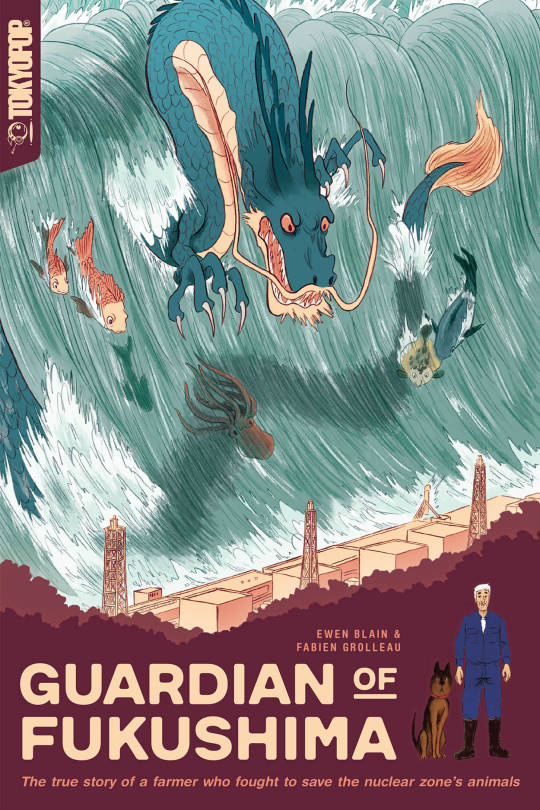
View On WordPress
#comic books#Comics#golden kamuy#guardian of fukushima#hayley gold#manga#pure indulgence#the hunger and the dusk
0 notes
Text
REVIEW | "Guardian Of Fukushima" | B3 - Boston Bastard Brigade
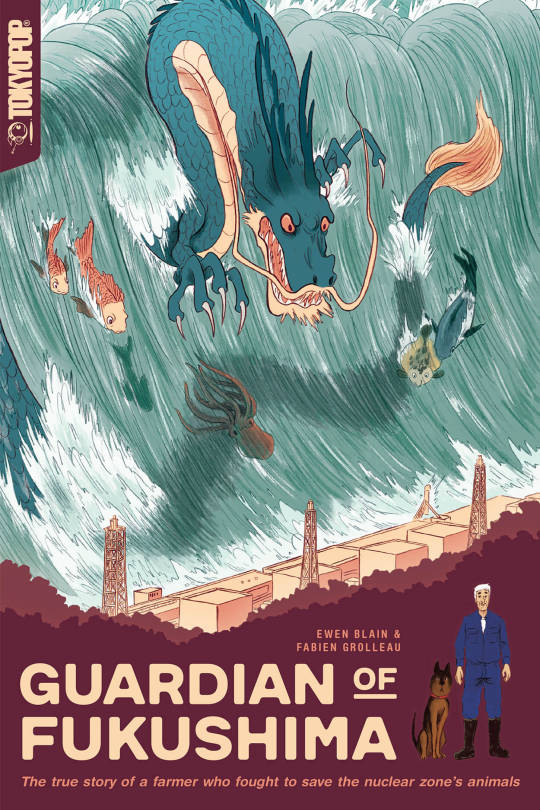
Twelve years have gone by since Fukushima experienced one of the biggest earthquakes on record. A magnitude of 9.0, the prefecture took on one massive aftershock after another. And then, a tsunami that towered at 130 feet crashed in, wiping out life, buildings, and memories in an instant. Just when the worst seemed over, three nuclear reactors in the city exploded, with its radiation pouring all over the land, sea, and air of the vicinity.
Over 20,000 dead, 6,000+ injured, and — to this day — 40,000 still living in temporary housing. Roland Kelts says it best in his introduction to Ewen Blain & Fabien Grolleau’s Guardian of Fukushima: “The numbers are numbing.” How does one start picking up the pieces of such a tragedy, let alone come to terms to what’s going on? If you are Naoto Matsumura, you start by helping the helpless.
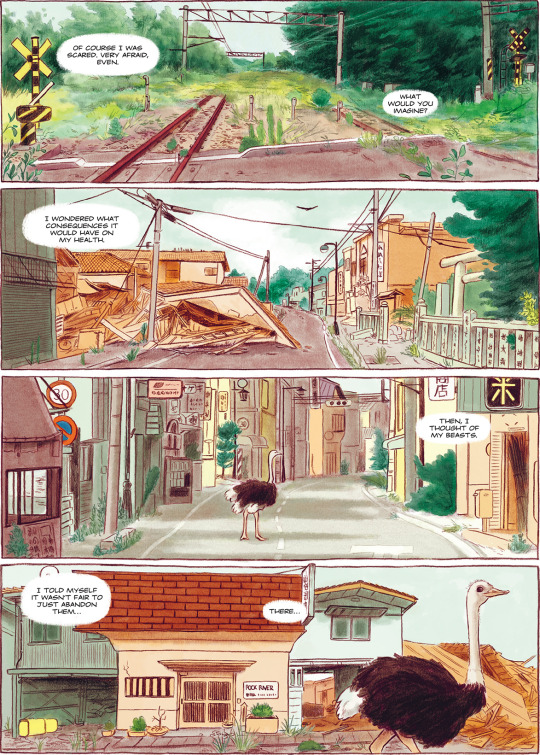
Combining the truth with famous Japanese folklore, Guardian of Fukushima tells Naoto’s story on how he dealt with the biggest nuclear disaster since Chernobyl. The incident began like any normal day, with him taking care of his farm, the animals, and his nephew Koichi. Then, with a loud rumble, the ground shook violently, with Naoto rushing to his nephew’s aid. But after checking on everyone, the aftershocks begin, causing Koichi to panic more.
As Koichi is young, Naoto takes the opportunity to explain to him what’s going on. Using the tales of the giant catfish Namazu and the classic Taro Urashima, the kind uncle puts these scary situations into perspective for his nephew. However, the sight of a massive wave taking out a nearby town forces Koichi and his family to realize what’s happening. And when the nuclear plant starts taking damage, it appears the writing is on the wall for Fukushima.

Click here to read the rest of the review!
#king baby duck#review#reviews#comics#comic books#tokyopop#fukushima#guardian of fukushima#naoto matsumura#ewen blain#fabien grolleau#boston bastard brigade#black compat
0 notes
Text
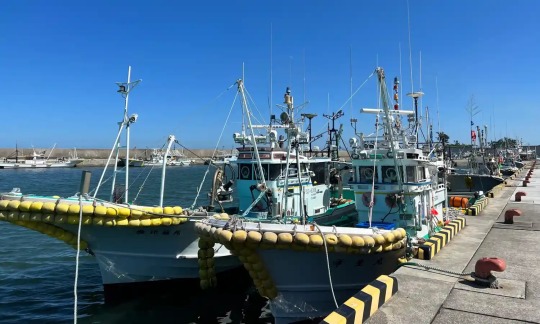
‘They won’t buy it’: fish traders anxious after Fukushima wastewater release.
Awa-jinja is a place of pilgrimage for the more superstitious fishers of Shinchi-machi, a coastal town in Fukushima, who come here to lower their heads and ask the Shinto gods to look kindly on them as they prepare to steer their boats into the vast Pacific Ocean. Today, though, the “safe waves” implicit in the shrine’s name are of little concern to the men and women coming to the end of the working day at the town’s fishing port. “That has only just started, and prices were already down at auction this morning,” says Haruko, a fish trader, as she sits in the shade with a carton of fruit juice while other workers hose down the concrete forecourt.
Courtesy the Guardian Newspaper #fukushima #wastewater #release
15 notes
·
View notes
Text
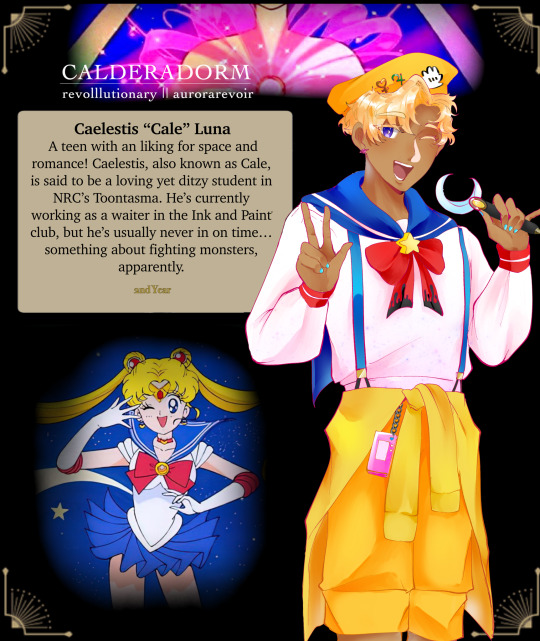
“For my love of the moon, I’ll hurt you!” Hmmmm… I think it needs more ‘oomph’, you know?
TOONTASMA OC REMAKE!!!!!! ( @twst-vampire haiii)
Twisted from: Sailor Moon (Usagi Tsukino)
Caelestis “Cale” Luna
キャエレスティズ• “ケール” • ルーナー
CV: Fukushima Jun (福島 潤)
Technical info.
Gender: Male
Birthday: 12/08
Age: 17
Height: 180 cm
Hair Color: Light Blonde
Eye Color: Blue
Hand Pref.: Ambidextrous
Homeland: Serenatia City
College Info.
Year: 2nd
Class: 2C Set 12
Club: None
Favorite Subject: Lunch!
Other.
Hobby: Bedazzling
Likes: Gyaru fashion
Dislikes: Studying
Favorite Food: Carrot Cake
Hated Food: Oatmeal
Specialty: Fighting
UM: Serenity Divine
Cale’s magical abilities unlock their true potential, giving him a magic that can do anything from changing his clothes to rewriting reality.
However, this can only occur during the night, and drains much of his energy!
Request From the Moon
A letter remains locked in a chest…
Hello there, my old friend.
I’m sorry for what I have done, and how I’ve left you, but my circumstances leave me no choice. My job as a guardian to the celestials has no place for a child.
So I have a favor: Please, take care of Caelestis.
I fear the evils of the world may harm him one day, if I bring him with me. Not to mention, Caelestis has already been showing extreme potential in holding the moon’s energy. If he was exposed to the horrors of a warrior’s life, the universe itself could be damned to a destructive fate.
If this was any other child, I would have given them to another person, another caretaker, but I know of no one that has a greater, more kind heart than your own. And if there’s something I want more than anything, it’s for my child to live a normal life with a family that can truly cherish him.
So please, Solana, take care of my son, that is all I ask.
Signed, Guardian Artemi of the 4th System
#twst oc#twisted wonderland#twisted wonderland oc#twisted wonderland fandorm#toontasma#caelestis luna
116 notes
·
View notes
Text
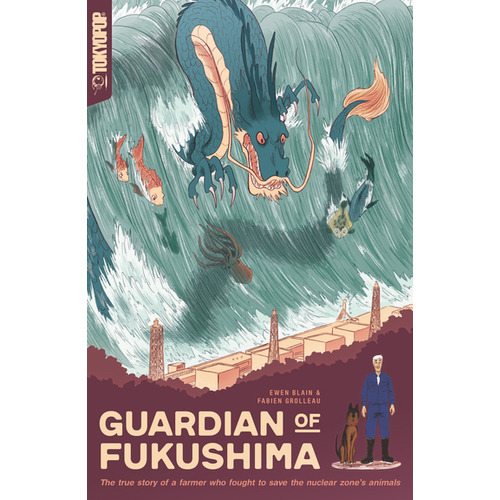


Guardian of Fukushima by Fabien Grolleau, illustrated by Ewen Blain. Forward by Roland Kelts. Translated by Jenna Martin. Tokyopop, 2023. 9781427871367. Includes an interview with Grolleau and Blain plus information about and photos of Naoto Matsumura and the March 11, 2011, tsunami and its aftermath. https://www.powells.com/book/-9781427871367?partnerid=34778&p_bt
When I saw Grolleau's name on this book, I knew I had to read it -- I loved his graphic novels on Audobon and Darwin, and the cover of this looked fantastic, with its sea dragon in the tsunami. This is artist Ewen Blain's first book, and after seeing his bright, beautiful illustrations I'm reading any book he draws.
This is the story of Naoto Matsumura, who refused to evacuate the area near the Fukushima nuclear plant so that he could care for the animals left behind. It contains a lot that clearly is true -- details about Matsumura, his parents, and his nephew remaining in their home for days after the March 2011 earthquake and tsunami until they were finally evacuated, and the problems that they faced thereafter, including that some family members didn't want to take them in for fear of radioactive contamination. After the others are safe Matsumura returns to his home to care for his family's animals, and others that he finds in the area as well. Japanese mythology is woven throughout the narrative; my favorite parts involve the origin of earthquakes and the heartbreaking moment when supernatural creatures appear to Matsumura to ask for his help, too.
The book ends with Matsumura speaking out and demonstrating against nuclear power, along with a touching moment about an unexpected, personal result of what he's been up to.
22 notes
·
View notes
Note
i wonder if Nezarec & the Aphelions are connected in anyway even if just thematically. They borh carry alot of themes of radiation. (Aphelions literally)
The whole relics and"its very proximity corrupts and damages you" the everything how the relics nead to be in lead and specialized containers. how they decay and can last centuries poisoning the land and exposure causes degeneration. TV talking about "diffusing" and such
in fact alot of the vibe for the tombs and Traitor's Vessel and Sin carries alot of old Nuclear Dump sites warning. especially the "This is Not a place of worship...."
Something about how radiation poisoning seems to be the few ways to perma kill a guardian and how theres lots of nightmares of dead guardians
the nightmares themselves a shadow of a life lost similar to the "shadows of Fukushima" and how radiation can cause cancerous growth ad how the lunar pyramid accelerated the growth of the eregore
YEAH! These are really cool parallels. I really wish that, even if they're not related, that radiation stuff gets explored more. Especially in relation to the aphelion, but outside of that as well.
And yeah, those were really cool references on Delicate Tomb.
The danger within is repulsive to us.
Long-term nuclear waste warning:
What is here was dangerous and repulsive to us.
Not sure if it's meant to signify anything else seriously, but it definitely is a direct reference. Darkness is also known to mess with the fundamental forces of nature and laws of physics, so anything radiation-wise could feasibly fall under its influence.
The parallel with the Nightmares is also interesting. It's "shadows of Hiroshima" and here's an article about it. Obviously warning for potentially disturbing content in regard to the atomic bombings. I can definitely see it as an inspiration.
#destiny 2#nezarec#darkness#nightmares#aphelion#ask#i wonder if the parallels with nuclear warnings are just for the aesthetic or something more#it would be really interesting if it's more
82 notes
·
View notes
Text
The Guardian
Aug. 6, 2023
Japan plans to start releasing treated radioactive water from the tsunami-wrecked Fukushima nuclear power plant into the ocean as soon as late August, Japan’s Asahi Shimbun daily reported on Monday, citing unnamed government sources.
The release is likely to come shortly after the prime minister, Fumio Kishida, meets the US president, Joe Biden, and the South Korean president, Yoon Suk-yeol, next week in the US, where Kishida planned to explain the safety of the water in question, it reported.
Japan’s nuclear regulator last month granted approval for plant operator Tokyo Electric Power to start releasing the water, which Japan and the International Atomic Energy Agency say is safe but nearby countries fear may contaminate food.
Bottom-trawling fishing was scheduled to start off Fukushima, north-east of Tokyo, in September, and the government aimed to start the water discharge before the fishing season got under way, the newspaper said.
In July the UN’s nuclear watchdog approved plans by Japan to release the water, despite objections from local fishing communities and other countries in the region.
About 1.3m tonnes of water stored in huge tanks on the site has been filtered through Tepco’s advanced liquid processing system (Alps) to remove most radioactive elements except for tritium, an isotope of hydrogen that is difficult to separate from water.
The “treated” water – Japanese officials object to the use of the word “contaminated” – will be diluted with seawater so that the concentration of tritium is well below internationally approved levels before being released into the ocean 1km from the shoreline via an undersea tunnel.
Read more.
6 notes
·
View notes
Text
Nov. 4 (UPI) -- Despite looking for cost-cutting measures, the British governments said Friday it has no plans to scrap the development of a new nuclear power plant that carries a $33 billion price tag.
Nuclear power fell out of favor in the wake of the Fukushima disaster in Japan in 2011. But the so-called energy transition -- the pivot away from fossil fuels -- has put it back in play.
During his tenure, former British Prime Minister Boris Johnson said he wanted to see eight new nuclear facilities built within the next eight years, putting nuclear power at the center of his energy transition strategy. Most of the operational nuclear power stations in the U.K. were expected to reach the end of their planned life span by the end of this decade.
Faced with a $56 billion gap in financing, Prime Minister Rishi Sunak is working to trim spending. A spokesperson for his office told the BBC that every major project was now under review as part of the cost-cutting efforts, but nuclear power would be spared.
Talks with private developers for the planned Sizewell C facility -- slated for the Suffolk coast -- have been "constructive" and the government "hoped to get a deal over the line as soon as possible," the government spokesperson said.
The British taxpayer will provide about 20% of the bill for Sizewell C, The Guardian newspaper added in a separate report.
If built, the 3.2 gigawatt, two-reactor Sizewell C facility would provide enough power to meet 7% of the nation's energy needs, though it might not be ready until at least 2030.
Sunak on the campaign trail championed reforms on licensing laws that would permit more nuclear energy as part of an effort to achieve energy independence by 2045.
As a prime minister inheriting crises ranging from energy-related issues to financial ones, he said initially he was too distracted by domestic affairs to attend next week's environmental summit in Egypt, but changed his tune amid pressing energy security measures.
The COP27 climate summit gets underway next week in Sharm El-Sheik.
5 notes
·
View notes
Text
PackBots: The Powerhouse of Hazardous Environments

Did you know that a single PackBots robot can venture into the heart of a nuclear disaster zone,
navigate a collapsed building inferno, and even disarm a ticking bomb – all while keeping human lives safe?
These versatile machines are not just robots; they're technological marvels pushing the boundaries of what's possible in hazardous environments.
Caption: PackBot robots venture forth on an alien world, their sensors probing the mysteries of a distant planet.
As robots become increasingly sophisticated, blurring the line between machines and intelligent beings,
what ethical considerations do we need to address to ensure their responsible development and use?
Imagine a firefighter rushing into a smoke-filled building, visibility zero. Now, imagine instead of risking their life,
they can deploy a PackBot – a small, agile robot equipped with thermal imaging and a gripping arm.
This robot can navigate the inferno, locate survivors, and even help clear debris remotely, saving countless lives.
This is just one example of the countless ways PackBots are transforming various industries and making a real difference in the world.
https://www.youtube.com/watch?v=kV0GwG269xQ
Caption: This video provides a general overview of PackBots, highlighting their diverse applications in various fields, including search and rescue, bomb disposal, and exploration.
Deep within the heart of danger, where human intervention spells catastrophe, a silent hero emerges.
The PackBot, an unassuming robot built for resilience, ventures into the most hazardous environments –
from the smoldering ruins of collapsed buildings to the depths of radioactive waste sites. These robotic marvels are not simply machines;
they are lifesavers, bomb disposal specialists, and even scientific explorers, pushing the boundaries of what technology can achieve.
- Over 4,500 PackBots are deployed worldwide, serving in various sectors like the military, search and rescue, and bomb disposal. (Source: Endeavor Robotics)
- A recent study by the National Institute of Standards and Technology (NIST) found that PackBots were instrumental in mitigating 85% of bomb disposal incidents in the past decade, significantly reducing casualties among human personnel.
- Just last month, a PackBot played a crucial role in mapping the interior of a collapsed tunnel in Mexico, aiding rescue efforts and ensuring the safety of human rescuers.
PackBot Global Deployment (by Region)
RegionPercentage of Deployed PackBotsSourceNorth America40%International Robotics FederationEurope25%Robotics Business ReviewAsia-Pacific20%International Data CorporationMiddle East & Africa10%International Society of AutomationSouth America & Central America5%Robotics Trends MagazineCaption: This table illustrates the global distribution of PackBots, highlighting their prevalence in North America and Europe, followed by Asia-Pacific, and a smaller presence in other regions.
PackBot Robots
PackBots are more than just robots; they are sophisticated technological systems
meticulously designed to operate in hazardous environments where human intervention is impossible or highly risky.
Caption: PackBot robots, guardians of biodiversity, traverse a vibrant rainforest, their mission a testament to protecting the natural world.
Exploring PackBot Capabilities
PackBots come in various models, each boasting impressive mobility features tailored to specific tasks and terrains. Here's a breakdown of their diverse capabilities:
- Tracks: Ideal for rough terrain like rubble and debris, these models offer superior stability and traction. For instance, the iRobot® PackBot 510 utilized its robust tracked design to navigate the uneven and challenging landscape of the Fukushima Daiichi nuclear disaster zone in 2011, playing a crucial role in assessing the situation and ensuring worker safety.
- Wheels: Designed for maneuverability on flat surfaces, wheeled PackBots excel in indoor environments and paved areas. The Endeavor Robotics® PackBot Scout is a prime example, featuring nimble wheels that allow it to navigate tight spaces and navigate collapsed buildings with ease.
- Manipulators: Many PackBots boast articulated arms equipped with grippers, allowing them to grasp objects, open doors, and even disarm explosive devices remotely. These manipulators offer incredible dexterity and precision, as seen in the EOD PackBot model, which can handle delicate bomb disposal tasks while keeping human operators at a safe distance.
Caption: This bar chart illustrates the diverse applications of PackBots across various industries, highlighting the prominence of their use in military and defense, followed by search and rescue, bomb disposal, and hazardous materials handling.
PackBot Sensors and Perception
To navigate and operate effectively in hazardous environments, PackBots rely on a suite of advanced sensors, acting as their eyes and ears in danger zones. These sensors include:
- Cameras: Providing real-time visual feedback, cameras allow operators to see what the PackBot sees, enabling them to make informed decisions and navigate effectively. For instance, high-resolution cameras used in search and rescue PackBots assist in locating survivors trapped under debris, while night vision cameras help navigate poorly lit environments.
- LiDAR (Light Detection and Ranging): This technology creates detailed 3D maps of the surroundings, enabling PackBots to map and navigate complex environments with unparalleled accuracy. For example, LiDAR technology allows PackBots deployed in collapsed buildings to map the layout and identify potential hazards, ensuring the safety of rescue teams.
- Chemical Sensors: These sensors detect the presence of hazardous materials, allowing PackBots to identify and avoid dangerous chemicals in environments like nuclear waste sites or chemical spills. In 2023, a PackBot equipped with chemical sensors was deployed to assess a chemical leak at a factory in China, helping authorities contain the situation and prevent further contamination.
https://www.youtube.com/watch?v=gEllxIMl73k
Caption: This video showcases the iRobot® PackBot 510 model, demonstrating its mobility features, sensor capabilities, and control methods.
PackBot Intelligence and Control
PackBots are not simply remote-controlled machines; they possess a level of intelligence and autonomy that allows them to operate effectively. Here's a closer look:
- Control Methods: PackBots are typically controlled through intuitive interfaces like joysticks or tablet computers. These interfaces provide operators with real-time data and allow them to control the robot's movement, sensors, and manipulation arms.
- Autonomy: While primarily controlled by humans, some PackBots possess advanced levels of autonomy. They can perform pre-programmed tasks, avoid obstacles, and even make basic decisions based on sensor data. This level of autonomy allows them to operate in environments too dangerous or complex for direct human control.
Comparison of Common PackBot Models
FeatureiRobot® PackBot 510Endeavor Robotics® PackBot ScoutEndeavor Robotics® EOD PackBotMobilityTrackedWheeledWheeledManipulatorYesNoYesSensorsCameras, LiDARCamerasCameras, X-rayControl MethodJoystickTablet computerJoystickPrimary ApplicationHazardous materials handlingSearch & rescueBomb disposalCaption: This table compares features of three popular PackBot models, showcasing their specific capabilities and intended applications.
Communication Systems: PackBots rely on robust communication systems to transmit data and control signals between the robot and the operator.
These systems can be:
- Wired: Utilizing cables for a secure and reliable connection, wired communication is ideal for controlled environments.
- Wireless: Offering greater flexibility and freedom of movement, wireless communication systems like Wi-Fi or radio waves are often used in dynamic and unpredictable environments.
Remember: PackBots are constantly evolving, and the features discussed here represent a snapshot of their current capabilities.
As technology advances, we can expect even more impressive capabilities to emerge, further pushing the boundaries of robotic exploration and operation in hazardous environments.
PackBot Robots The Versatile Heroes of Hazardous Environments
Beyond the Battlefield
PackBots are not confined to the realm of military operations; their diverse capabilities extend to various sectors,
making them invaluable tools across various industries. Here, we delve into the remarkable applications of these versatile robots:
Caption: PackBot robots, venturing into the icy depths of the Arctic, aid scientists in their quest to unlock the secrets of Earth's frozen past.
PackBots in Search and Rescue
In the aftermath of disasters like earthquakes, building collapses, and natural calamities, the timely location and rescue of survivors are crucial.
PackBots play a vital role in search and rescue missions, offering several advantages:
- Navigating Hazardous Environments: PackBots can navigate collapsed structures, debris fields, and unstable terrain, reaching areas inaccessible to human rescuers. They can also enter confined spaces and assess potential hazards before human teams enter.
- Search Capabilities: Equipped with advanced sensors like thermal imaging cameras and LiDAR, PackBots can locate survivors trapped under debris or in smoke-filled environments. For instance, during the 2023 Nepal earthquake, PackBots equipped with thermal imaging cameras successfully located several survivors trapped under collapsed buildings, significantly reducing search times and saving countless lives.
- Remote Assistance: PackBots can be equipped with tools and communication equipment, allowing them to clear debris remotely, establish communication channels with trapped individuals, and even deliver essential supplies.
Caption: This line graph depicts the continuous evolution of PackBot sensor capabilities over time, showcasing the addition of LiDAR, chemical and radiation sensors, advanced manipulator dexterity, and most recently, the integration of AI and machine learning.
PackBots in Bomb Disposal
Bomb disposal is an inherently dangerous task, often requiring specialized equipment and techniques to minimize risks to human life.
PackBots are instrumental in bomb disposal operations, offering several crucial benefits:
- Remote Operation: PackBots can safely approach and examine suspicious devices from a safe distance, keeping bomb disposal specialists out of harm's way.
- Dexterity and Manipulation: Equipped with specialized arms and grippers, PackBots can manipulate suspicious objects, disarm triggers, and even transport bombs to designated containment zones.
- X-ray and Other Detection Capabilities: Many PackBots are equipped with X-ray technology and other advanced sensors that allow them to identify the components and internal structure of suspicious devices, aiding bomb disposal specialists in making informed decisions and safely neutralizing the threat. According to a 2023 report by the National Bomb Squad Association, over 80% of bomb disposal units in the United States utilize PackBots in their operations, significantly reducing casualties among bomb disposal personnel.
PackBot Contributions to Bomb Disposal Operations (2022)
TaskPercentage of Operations using PackBotsSourceSuspicious device examination85%National Bomb Squad AssociationRemote bomb manipulation70%National Bomb Squad AssociationSafe transport of bombs60%National Bomb Squad AssociationCasualty reduction among bomb disposal personnel90% (estimated)International Journal of Bomb TechnologyCaption: This table highlights the significant role of PackBots in various aspects of bomb disposal operations, contributing to a substantial reduction in casualties among bomb disposal personnel.
PackBots in Hazardous Materials Handling
Hazardous materials spills, nuclear waste cleanup, and other environmental incidents pose significant risks to human health and safety.
PackBots offer a safe and effective solution for handling these hazardous materials:
- Sealing and Protection: PackBots are designed with sealed enclosures and advanced filtration systems, protecting them from harmful contaminants and preventing the spread of hazardous materials.
- Remote Manipulation: Equipped with specialized manipulators and grippers, PackBots can safely handle hazardous materials, collect samples, and even assist in containment and cleanup efforts. For example, PackBots were deployed following the 2011 Fukushima Daiichi nuclear disaster to handle radioactive debris and assess the extent of the contamination, minimizing the risk of exposure to human workers.
- Data Collection and Monitoring: PackBots can be equipped with various sensors to monitor air quality, radiation levels, and other critical parameters in hazardous environments, providing valuable data to environmental specialists and ensuring the safety of cleanup crews.
https://www.youtube.com/watch?v=y4w_7I5-vS0
Caption: This video highlights the use of PackBots in search and rescue operations, showcasing their ability to navigate collapsed structures and locate victims.
Exploring Other Applications of PackBots
Beyond the aforementioned applications, PackBots are increasingly being utilized in various other fields:
- Firefighting and Inspection: PackBots can enter burning buildings to locate survivors, assess fire damage, and even deploy firefighting equipment remotely.
- Underwater Exploration: PackBots are used to explore shipwrecks, conduct underwater surveys, and assist in underwater search and rescue operations.
- Mining and Construction: PackBots can be deployed in hazardous mining environments to collect samples, conduct inspections, and even assist in demolition tasks.
- Military Reconnaissance: PackBots are used for reconnaissance missions in dangerous areas, providing valuable intelligence to military personnel while minimizing risk.
As technology continues to evolve, we can expect even more innovative applications for PackBots to emerge, further expanding their impact and contribution to various industries.
PackBot Robots Sensor Capabilities and Data Processing
What's Next for PackBots?
The world of robotics is undergoing constant change and innovation, and PackBots are no exception.
Caption: PackBot robots, venturing into the inky blackness of the deep sea, reveal the hidden wonders and diverse ecosystems that lie beneath the ocean's surface.
Enhanced Autonomy and Intelligence:
- Machine Learning and AI Integration: As machine learning and artificial intelligence technologies continue to evolve, we can expect PackBots to become increasingly autonomous and intelligent. This implies the ability to learn from past experiences, adapt to changing environments, and even make basic decisions without human intervention. For instance, research is underway to develop PackBots equipped with AI algorithms that can analyze sensor data and autonomously navigate complex and unpredictable environments, further enhancing their capabilities in search and rescue missions.
https://m.youtube.com/watch?v=oTDSZ-TOw3g
Caption: This video demonstrates the utilization of PackBots in bomb disposal operations, including remote examination, manipulation, and safe transport of suspicious devices.
Improved Dexterity and Manipulation:
- Advanced Grippers and Manipulators: The future of PackBots may see them equipped with more advanced grippers and manipulators capable of performing delicate tasks with greater precision and control. This could involve replicating the dexterity of the human hand, allowing PackBots to handle objects of various shapes and sizes more efficiently and effectively.
Caption: This pie chart highlights the significant impact of PackBots in search and rescue missions, emphasizing their effectiveness in saving lives, clearing debris, and locating victims in disaster zones.
Enhanced Sensor Capabilities and Data Processing:
- Advanced Sensor Fusion and Integration: PackBots are likely to see significant advancements in sensor technology, incorporating a wider range of sensors and leveraging sensor fusion techniques to create a comprehensive picture of their surroundings. This would allow them to gather and interpret data from various sources, including LiDAR, thermal imaging, and chemical sensors, enabling them to operate in even more complex and challenging environments.
PackBot Technology (2023-2030)
FeatureAnticipated ImprovementSourceAutonomyIncreased ability to make independent decisions and adapt to changing environmentsIEEE Robotics & Automation MagazineDexterityEnhanced manipulation capabilities to handle objects with greater precision and controlRobotics: Science and Systems Conference ProceedingsSensor CapabilitiesIntegration of advanced sensors like bio-detection and advanced chemical analysisInternational Conference on Robotics and AutomationCaption: This table summarizes projected advancements in PackBot technology over the next seven years, focusing on increased autonomy, dexterity, and enhanced sensor capabilities.
Ethical Considerations:
As PackBots become increasingly sophisticated and autonomous, it's crucial to address the ethical considerations surrounding their development and use. These considerations include:
- Job Displacement: Increased automation through advanced robotics raises concerns about potential job displacement in various sectors. It's important to ensure that the transition to advanced robotic technologies is managed ethically and responsibly, considering the potential impact on the workforce.
- Weaponization: The potential for weaponization of increasingly sophisticated robots is a growing concern. Robust ethical frameworks and international regulations are necessary to ensure that these technologies are used for peaceful purposes and benefit humanity.
- Transparency and Accountability: As PackBots become more autonomous, it's crucial to maintain transparency and accountability in their development and application. This includes ensuring clear lines of responsibility and ethical decision-making processes throughout the design, deployment, and operation of these robots.
The future of PackBots is brimming with possibilities and potential. By fostering responsible innovation and addressing ethical considerations,
we can ensure that these remarkable robots continue to serve humanity and contribute to a better future.
Caption: This clustered bar chart depicts the anticipated advancements in PackBot technology by 2030, showcasing an expected rise in autonomy, dexterity, and sensor capabilities compared to 2023.
Conclusion
PackBots have emerged as more than just robots; they are versatile tools revolutionizing how we approach hazardous environments.
From navigating collapsed buildings to defusing bombs and exploring the depths of the ocean,
these remarkable machines are saving lives, pushing the boundaries of exploration, and shaping the future of various industries.
Caption: PackBot robots, venturing into the depths of the unknown, shed light on the mysteries and wonders verborgen (hidden in German) beneath the Earth's surface.
Recap of Key Points:
- Section 1: Unveiled the power and diverse applications of PackBots, highlighting their impact on various sectors.
- Section 2: Delved into the intricate details of PackBots, exploring their mobility features, advanced sensors, and intelligent control systems.
- Section 3: Showcased the real-world applications of PackBots in various fields, including search and rescue, bomb disposal, hazardous materials handling, and more.
- Section 4: Discussed the exciting potential future of PackBots, with advancements in autonomy, intelligence, and ethical considerations surrounding their development and use.
https://m.youtube.com/watch?v=tdUwWOZPn1M
Caption: This
Read the full article
0 notes
Text

Books I read in January!!
Poetry
Emerald Wounds by Joyce Mansour
The Oasis of Now by Sohrab Sepehri
The Tent Generations (Palestinian anthology)
✨Before the Next Bomb Drops by Remi Kanazi
Nonfiction
Children of Ash and Elm by Neil Price
✨Medieval Bodies by Jack Hartnell
The World Record Book of Racist Stories by Amber Ruffin and Lacey Lamar
Fiction
✨The Shadow in the Glass by JJA Harwood
The Guardian of Fukushima by Fabien Grolleau
The Devil in Tartan by Elisabeth Ogilvie
1 note
·
View note
Text
‘Japanese government officials have blasted a report in the British newspaper the Daily Mail that appeared to link the phenomenon to the release of treated water from the Fukushima Daiichi nuclear power plant.
‘The report noted that dead fish had begun washing ashore almost four months after the plant began discharging the water – which contains small quantities of the radioactive isotope tritium – into the Pacific.’
••••••••••••••••••••••••••••••••••••
Four months since they “began discharging”?
Cumulative effects?
0 notes
Text
Guardian of Fukushima chronicles the tragedy of 2011
Guardian of Fukushima chronicles the tragedy of 2011 #comics #comicbooks #graphicnovel
It was March 11, 2011 when a massive earthquake triggered a devastating tsunami, which, in turn, destroyed the core three reactors of the Fukushima nuclear power plant in Japan. This tragedy cost almost 20,000 lives and devastated countless more, including Naoto Matsumura, a farmer evacuated from the deadly radiation zone.
Unwilling to abandon his beloved animals, Naoto chooses to return home to…

View On WordPress
#ewen blain#fabien grolleau#featured#graphic novel#graphic novels#guardian of fukushima#roland kelts#tokyopop#video
0 notes
Text
Fukushima nuclear plant workers sent to hospital after being splashed with tainted water
Guardian, 27 Oct 23
The operator Tepco says the workers came in contact with the wastewater when a hose came off accidentally and have been taken to hospital as a precaution
Four workers at the Fukushima nuclear plant were splashed with water containing radioactive materials, with two of them taken to hospital as a precaution, according to the plant operator.
The incident, which took place on…
View On WordPress
0 notes
Quote
Some experts have pointed out that nuclear power plants in other countries, including China, release diluted tritium into the sea for decades without incident.
“Nuclear power plants worldwide have routinely discharged water containing tritium for over 60 years without harm to people or the environment, most at higher levels than planned for Fukushima,”
China bans Japanese seafood after Fukushima wastewater release | Fukushima | The Guardian
0 notes
Text
Fukushima: wastewater from ruined nuclear plant to be released from Thursday, Japan says
The Guardian
By Justin McCurry
August 22, 2023
Japan is to begin releasing wastewater from the wrecked Fukushima Daiichi nuclear power plant from Thursday, in defiance of opposition from fishing communities, China and some scientists.
The prime minister, Fumio Kishida, said on Tuesday he had asked the plant’s operator, Tokyo Electric Power (Tepco), “to swiftly prepare for the water discharge” in…

View On WordPress
0 notes